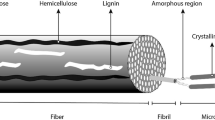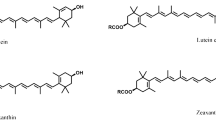Abstract
Coumestrol (CMS), one of the soybean isoflavonoids which contains several benefits for maintaining skin function including antiageing properties. In this study, we evaluated various explant sources and plant genotypes to determine competent soybean adventitious root materials for the mass production of CMS, and investigated their skin care efficacies to be used as a novel cosmetic ingredient. Adventitious roots were directly induced from in vitro seedling derived from the mature seeds, extracts were prepared and refluxed for enzymatic deglycosylation. In vitro cell cytotoxicity was evaluated using normal human dermal fibroblast and murine B16 melanoma cells after treatment with increasing concentrations of methanol soybean adventitious roots extracts for 72 h. Finally, in vitro cell assays on HDF cells were performed to evaluate the effect of the soybean adventitious roots extracts in collagen production. The root induction frequency and biomass productivity were significantly affected by plant genotypes, explant sources, the type of auxin used and its concentration. The total CMS production (per 1 L medium) after 4 weeks of culture in a bulb-type bubble bioreactor (3 L capacity) was the highest in the adventitious roots induced from the radicles of Glycine max, ‘Sinhwakong’. Different strengths of Murashige and Skoog (MS) medium were tested to develop culture protocols and the highest total CMS production (per 1 L medium) was observed at 1/2 MS. The content of coumestrin, the glycoside form of CMS, was higher than that of CMS in the roots cultured in 1/2 MS medium for 4 weeks in a bioreactor. The final content of CMS in the ethanol extract after enzymatic deglycosylation was 81.3-fold higher than non-enzymatic deglycosylation. Almost all the coumestrin in the roots were converted to CMS. Further, the enriched CMS root did not exhibit any cell cytotoxicity in normal human dermal fibroblast (HDF) and murine B16 melanoma cells (B16) for 72 h. In addition, in vitro collagen production assay on HDF cells showed that the enriched CMS root increased the collagen production compared to the coumestrol, daidzein, and non-enzyme-treated sample. Thus, enriched CMS root could be potential ingredient for the cosmetic applications






Similar content being viewed by others
References
Amirouche L, Stuchbury T, Matthews S (1985) Comparisons of cultivar performance on different nutrient media in a routine method for potato micropropagation. Potato Res 28:469–478
Bellamine J, Penei C, Greppin H, Gaspar T (1998) Confirmation of the role of auxin and calcium in the late phases of adventitious root formation. J Plant Growth Reg 26:191–194
Castro CC, Pagnussat AS, Orlandi L, Worm P, Moura N, Etgen AM, Netto CA (2012) Coumestrol has neuroprotective effects before and after global cerebral ischemia in female rats. Brain Res 1474:82–90
Chang KH, Jo MN, Kim KT, Paik HD (2014) Evaluation of glucosidases of Aspergillus niger strain comparing with other glucosidases in transformation of ginsenoside Rb1 to ginsenosides Rg3. J Ginseng Res 38:47–51
Charchoglyan A, Abrahamyan A, Fujii I, Boubakir Z, Gulder TAM, Kutchan TM, Vardapetyan H, Bringmann G, Ebizuk Y, Beerhues L (2007) Differential accumulation of hyperforin and secohyperforin in Hypericum perforatum tissue cultures. Phytochemistry 68:2670–2677
Federici E, Touche´ A, Choquart S, Avanti O, Fay L, Offord E, Courtois D (2003) High isoflavone content and estrogenic activity of 25-year-old Glycine max tissue cultures. Phytochemistry 64:717–724
Gaid M, Haas P, Beuerle T, Scholl S, Beerhues L (2016) Hyperforin production in Hypericum perforatum root cultures. J Biotech 222:47–55
Jayakodi M, Lee SC, Park HS, Jang WJ, Lee YS, Choi BS, Nah GJ, Kim DS, Natesan S, Sun C, Yang TJ (2014) Transcriptome profiling and comparative analysis of Panax ginseng adventitious roots. J Ginseng Res 38:278–288
Khan MA, Abbasi BH, Shah NA, Yücesan B, Ali H (2015) Analysis of metabolic variations throughout growth and development of adventitious roots in Silybum marianum L. (Milk thistle) a medicinal plant. Plant Cell Tiss Org Cult 123:501–510
Khan T, Abbasi BH, Khan MA, Azeem M (2017) Production of biomass and useful compounds through elicitation in adventitious root cultures of Fagonia indica. Ind Crops Prod 108:451–457
Kim EH, Ro HM, Kim SL, Kim HS, Chung IM (2012) Analysis of isoflavone, phenolic, soya sapogenol, and tocopherol compounds in soybean (Glycine max (L.) Merrill) germplasms of different seed weights and origins. J Agric Food Chem 60:6045–6055
Knobloch KH, Berlin J (1983) Influence of phosphate on the formation of theindole alkaloid and phenolic compounds in cell suspension cultures of Catharanthus roseus L. comparison of enzyme activities and product accumulation. Plant Cell Tiss Org Cult 2:333–340
Lazzeri PA, Hildebrand DF, Collins GB (1987) Soybean somatic embryogenesis: effects of hormones and culture manipulations. Plant Cell Tiss Org Cult 10:197–208
Lee EJ, Paek KY (2012) Enhanced productivity of biomass and bioactive compounds through bioreactor cultures of Eleutherococcus koreanum Nakai adventitious roots affected by medium salt strength. Ind Crops Prod 36:460–465
Lee YH, Yuk HJ, Park KH, Bae YS (2013) Coumestrol induces senescence through protein kinase CKII inhibition-mediated reactive oxygen species production in human breast cancer and colon cancer cells. Food Chem 141:381–388
Lee YS, Park HS, Lee DK, Jayakodi M, Kim NH, Lee SC, Kundu A, Lee DY, Kim YC, In JG, Kwon SW, Yang TS (2017) Comparative analysis of the transcriptomes and primary metabolite profiles of adventitious roots of five Panax ginseng cultivars. J Ginseng Res 41:60–68
Montero G, Arriagada F, Günther G, Bollo S, Mura F, Berríos E, Morales J (2019) Phytoestrogen coumestrol: antioxidant capacity and its loading in albumin nanoparticles. Int J Pharm 1(562):86–95
Murashige T, Skoog F (1962) A revise medium for rapid growth and bioassay with tobacco tissue culture. Physiol Plant 15:473–497
Park CM, Joung MS, Paek KY, Choi JW (2010) Inhibitory effect of Jewel orchid (Anoectochilus formosanus) plantlet extract against melanogenesis and lipid droplet accumulation. J Soc Cosmetics Kor 36:145–150
Park GE, Baek SH, Kim JE, Lim TG, Lee CC, Yang H, Kang YG, Park JS, Augustin M, Mrosek M, Lee CY, Dong ZG, Huber R, Lee KW (2015) Flt3 is a target of coumestrol in protecting against UVB-induced skin photoaging. Biochem Pharmacol 93:473–483
Phillips R, Henshaw GG (1977) The regulation of synthesis of phenolics in stationary phase cell cultures of Acer pseudoplatanus L. J Exp Bot 28:785–794
Saeed S, Ali H, Khan T, Kayani W, Khan MA (2017) Impacts of methyl jasmonate and phenyl acetic acid on biomass accumulation and antioxidant potential in adventitious roots of Ajuga bracteosa Wall ex Benth., a high valued endangered medicinal plant. Physiol Mol Biol Plants 23:229–237
Saiman MZ, Mustafa NR, Schulte AE, Verpoorte R, Choi YH (2012) Induction, characterization, and NMR-base metabolic profiling of adventitious root cultures from leaf explants of Gynura procumbens. Plant Cell Tiss Org Cult 109:465–475
Silja PK, Satheeshkumar K (2015) Establishment of adventitious root cultures from leaf explants of Plumbago rosea and enhanced plumbagin production through elicitation. Ind Crops Prod 76:479–486
Simons R, Vincken JP, Bohin MC, Kuijpers TF, Verbruggen MA, Gruppen H (2011) Identification of prenylated pterocarpans and other isoflavonoids in Rhizopus spp. elicited soya bean seedlings by electrospray ionisation mass spectrometry. Rapid Commun Mass Spectrom 25:55–65
Simons R, Gruppen H, Bovee TF, Verbruggen MA, Vincken JP (2012) Prenylated isoflavonoids from plants as selective estrogen receptor modulators (phytoSERMs). Food Funct 3:810–827
Song X, Wu H, Piao X, Yin Z, Yin C (2017) Microbial transformation of ginsenosides extracted from Panax ginseng adventitious roots in an airlift bioreactor. Electronic J Biotechnol 26:20–26
Taxvig C, Specht IO, Boberg J, Vinggaard AM, Nellemann C (2013) Dietary relevant mixtures of phytoestrogens inhibit adipocyte differentiation in vitro. Food Chem Toxicol 55:265–271
Theboral J, Sivanandhan G, Subramanyam K, Arun M, Selvaraj N, Manickavasagam M, Ganapathi A (2014) Enhanced production of isoflavones by elicitation in hairy root cultures of Soybean. Plant Cell Tiss Org Cult 117:477–481
Tripathi P, Rabara RC, Reese RN, Miller MA, Rohila JS, Subramanian S, Shen QJ, Morandi D, Bücking H, Shulaev V, Rushton PJ (2016) A toolbox of genes, proteins, metabolites and promoters for improving drought tolerance in soybean includes the metabolite coumestrol and stomatal development genes. BMC Genomics 17:1–22
Wang H, Murphy PA (1994) Isoflavone composition of American and Japanese soybeans in Iowa: effects of variety, crop year, and location. J Agric Food Chem 42:1674–1677
Yuk HJ, Song YH, Curtis-Long MJ, Kim DW, Woo SG, Lee YB, Uddin Z, Kim CY, Park KH (2016) Ethylene induced a high accumulation of dietary isoflavones and expression of isoflavonoid biosynthetic genes in Soybean (Glycine max) Leaves. J Agric Food Chem 64:7315–7324
Zacharius RM, Kalan EB (1990) Isoflavonoid changes in soybean cell suspensions when challenged with intact bacteria or fungal elicitors. J Plant Physiol 135:732–736
Zafar A, Singh S, Naseem I (2017) Cytotoxic activity of soy phytoestrogen coumestrol against human breast cancer MCF-7 cells: Insights into the molecular mechanism. Food Chem Toxicol 99:149–161
Zhang J, Gao WY, Wang J, Li XL (2011) Effects of explants types and media salt strength on growth and secondary metabolites accumulation in adventitious roots of Periploca sepium Bunge. Acta Physiol Plant 33:2447–2452
Acknowledgement
This work (Grant no: C0267437) was supported by business for Academic-Industrial cooperative establishments funded by Korea Small and Medium Business Administration in 2016.
Author information
Authors and Affiliations
Corresponding author
Ethics declarations
Conflict of interest
There is no conflict of interest. The authors are sole responsible.
Additional information
Publisher's Note
Springer Nature remains neutral with regard to jurisdictional claims in published maps and institutional affiliations.
Rights and permissions
About this article
Cite this article
Lee, E.J., Jiménez, Z., Seo, KH. et al. Mass production of coumestrol from soybean (Glycine max) adventitious roots through bioreactor: effect on collagen production. Plant Biotechnol Rep 14, 99–110 (2020). https://doi.org/10.1007/s11816-019-00589-2
Received:
Accepted:
Published:
Issue Date:
DOI: https://doi.org/10.1007/s11816-019-00589-2




